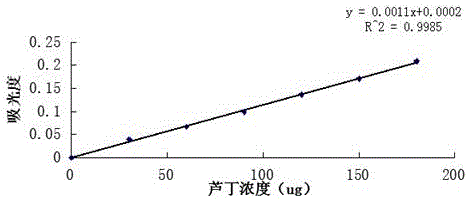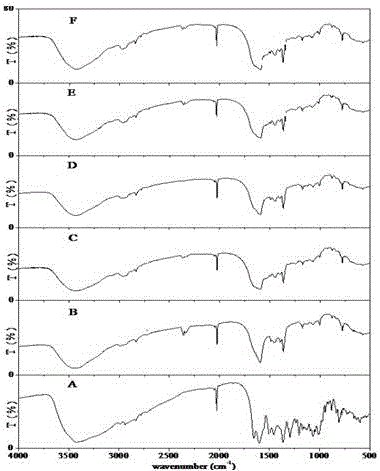Rutin-zein-sodium caseinate composite nanoparticles and preparation method thereof
A technology of zein and composite nanoparticles, which is applied in the direction of drug combinations, pharmaceutical formulas, non-effective ingredients of polymer compounds, etc., can solve the problem that degradable nanoparticle materials are not easily accepted by consumers, the safety of protein nanoparticles is reduced, chemical Cross-linking agent is toxic and other problems, to achieve good embedding effect, small particle size, uniform distribution effect
- Summary
- Abstract
- Description
- Claims
- Application Information
AI Technical Summary
Problems solved by technology
Method used
Image
Examples
Embodiment 1
[0035] 1. Preparation and yield, particle size, Z-potential, PDI and embedding rate characteristics of rutin-zein-sodium caseinate composite nanoparticles (CN-ZR nanoparticles)
[0036] 1. Preparation method of CN-ZR nanoparticles
[0037] Adopt anti-solvent method to prepare CN-ZR nanoparticles, the steps are as follows:
[0038] (1) Dissolve 0.1 g of rutin and 1.0 g of zein in 20 mL of ethanol-water solution, and the volume ratio concentration of ethanol in the ethanol-water solution is 60% to 90%.
[0039] (2) Then quickly add 50 mL of sodium caseinate solution to the mixed solution in step (1). The mass ratio concentration of the sodium caseinate solution is 1%-2.5%.
[0040] (3) The mixture obtained in step (2) was rotatated at 45° C. for 10 minutes, centrifuged at 4000 rpm for 10 minutes to remove a small amount of insoluble matter, and then freeze-dried for 24 hours. The obtained lyophilized powder samples were stored at 4°C until assayed.
[0041] 2. Yield
[0042] ...
Embodiment 2
[0077] The SEM scanning electron microscope of embodiment 2, CN-ZR nanoparticle, infrared spectrogram, color, slow release ability and antioxidant capacity are measured
[0078] 1. The appearance of nanoparticles SEM
[0079] Scanning electron microscopy was used to observe the appearance of nanoparticles. First, a nanoparticle solution with a mass ratio of 0.1-0.5% was prepared. After ultrasonic treatment at room temperature for 5 minutes, the metal foil was dipped into the solution and put on the stage, and quickly freeze-dried for observation. The result is as figure 2 shown. Depend on figure 2 It can be seen from A and B that the zein nanoparticles without adding sodium caseinate and rutin present a uniform spherical shape and a uniform particle size ( about), and after adding sodium caseinate, the nanoparticles are partially aggregated, and particles with smaller particle sizes appear, and the average particle size drops to about 253nm in diameter (such as figure...
PUM
| Property | Measurement | Unit |
|---|---|---|
| particle diameter | aaaaa | aaaaa |
| electric potential / voltage | aaaaa | aaaaa |
| particle diameter | aaaaa | aaaaa |
Abstract
Description
Claims
Application Information
 Login to View More
Login to View More - R&D
- Intellectual Property
- Life Sciences
- Materials
- Tech Scout
- Unparalleled Data Quality
- Higher Quality Content
- 60% Fewer Hallucinations
Browse by: Latest US Patents, China's latest patents, Technical Efficacy Thesaurus, Application Domain, Technology Topic, Popular Technical Reports.
© 2025 PatSnap. All rights reserved.Legal|Privacy policy|Modern Slavery Act Transparency Statement|Sitemap|About US| Contact US: help@patsnap.com



